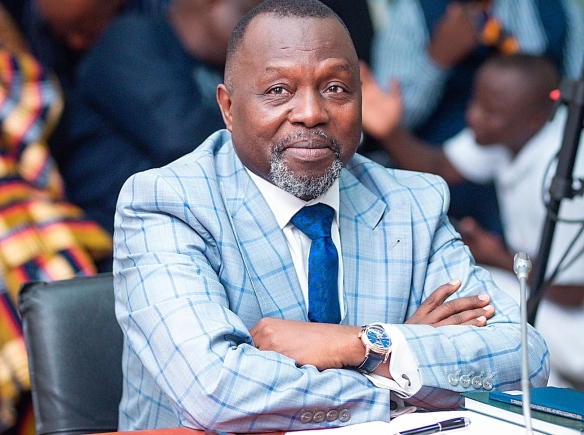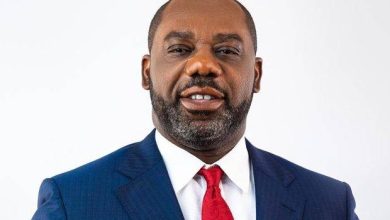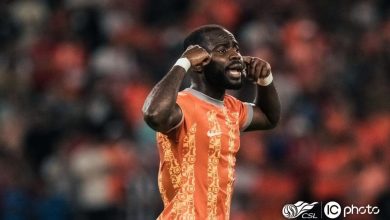
The Supreme Court is expected to interpret and bring finality to a thorny constitutional question of whether a Chief Justice removed from office also ceases to be a Justice of the Supreme Court.
A constitutional interpretation has been triggered by the Attorney-General (A-G), who has filed an application for constitutional reference to the Supreme Court in a case at the High Court in which the immediate past Chief Justice (CJ), Justice Gertrude Sackey Torkornoo, is challenging her removal as a Justice of the Supreme Court by President Mahama after she was removed as the CJ following a recommendation by a committee that found her culpable of misconduct.
The application, which is expected to be moved by the Deputy A-G, Dr Justice Srem-Sai, is praying the High Court to refer three questions to the Supreme Court for constitutional interpretation.
These are –
(1) Whether a person may retain his or her previous judicial office, if any, upon the appointment to the office of the Chief Justice,
(2) Whether the Chief Justice’s membership of the Superior Court of Judicature is ex officio the office of Chief Justice and,
(3) Whether a person may retain his or her membership of the Superior Courts of judicature upon removal from the office of the Chief Justice.
Constitutional reference
The application by the A-G was made in accordance with Article 130 of the Constitution. Article 130(1) of the Constitution gives the Supreme Court the exclusive original jurisdiction in all matters relating to the interpretation and enforcement of the Constitution.
Article 130(2) stipulates that where an issue of constitutional interpretation or enforcement arises in any proceedings in a court other than the Supreme Court, the court shall put the case on hold and refer the question to the Supreme Court for determination.
The court must then dispose of the matter in accordance with the determination made by the Supreme Court.
In this regard, if the High Court agrees with the A-G that the matter is a constitutional question, it must act in accordance with the provisions of Article 130(2) of the Constitution and refer the matter to the Supreme Court.
However, if the High Court refuses to make the constitutional reference to the Supreme Court, the A-G can file an application at the apex court for the court to suo moto (on its own refer the questions to itself and make the constitutional interpretation).
Justice Torkornoo’s case
On September 18, Justice Torkornoo went to the High Court to challenge her removal as a Justice of the Supreme Court by President Mahama.
In a judicial review application, she contended that her removal as a Justice of the Supreme Court was unlawful as the recommendation for her removal was in respect of her office as the Chief Justice, which followed a procedure completely different from that of the removal of a Justice of the Supreme Court.
Reliefs
The former Chief Justice is seeking an order of certiorari to quash the warrant of removal as a Justice of the Supreme Court issued by President Mahama on September 1 on the basis that it was in violation of the constitutional provisions for the removal of a Justice of the Superior Courts, and, therefore, unlawful, null and void.
She also wants the court to declare that President Mahama lacks the power to remove a Justice of the Superior Courts from office except for the removal being in accordance with Article 146 of the Constitution.
Again, she is asking the High Court to declare that only a committee properly constituted under Article 146(4) of the Constitution can hear a petition for the removal of a Justice of the Superior Court.
The former Chief Justice premises her application on two grounds -Illegality and lack of power under Article 146 of the Constitution for the President’s decision to remove her as a Justice of the Supreme Court, and the lack of jurisdiction for the committee that recommended her removal as the Chief Justice to also recommend her removal as a Justice of the Supreme Court.
Justice Torkonoo filed the application at the High Court by invoking the supervisory jurisdiction of the court under Article 141 of the Constitution, which gives the court the power to ensure that lower courts and other bodies do not overstep their powers or act unfairly.
Removal
On September 1, this year, President Mahama, following a recommendation by a five-member committee set up to hear a petition against Justice Torkornoo, removed Justice Torkornoo as the Chief Justice.
Based on the same warrant, President Mahama also removed Justice Torkornoo as a Justice of the Supreme Court.
In her affidavit in support of her application, Justice Torkornoo contended that under Article 146 of the Constitution, the procedure for the removal of the Chief Justice was different from that for the removal of a Justice of the Superior Court.
According to her, the committee that was set up to investigate the petitions against her was in specific reference to her role as the Chief Justice under Article 145(6).
That under the Constitution of Ghana, the prescribed procedure – including the composition of a committee to investigate or inquire into petitions for removing a person from the office of a Chief Justice is, in the wisdom of the framers of the Constitution, distinct from the mandated procedure for the removal of Justice of the Supreme Court of Ghana, the affidavit in support stated.
Jurisdiction to hear petitions for the removal of Justice of the Superior Courts is specifically stipulated by the Constitution 1992 to be vested in a committee formed pursuant to article 146 (4), it added.



